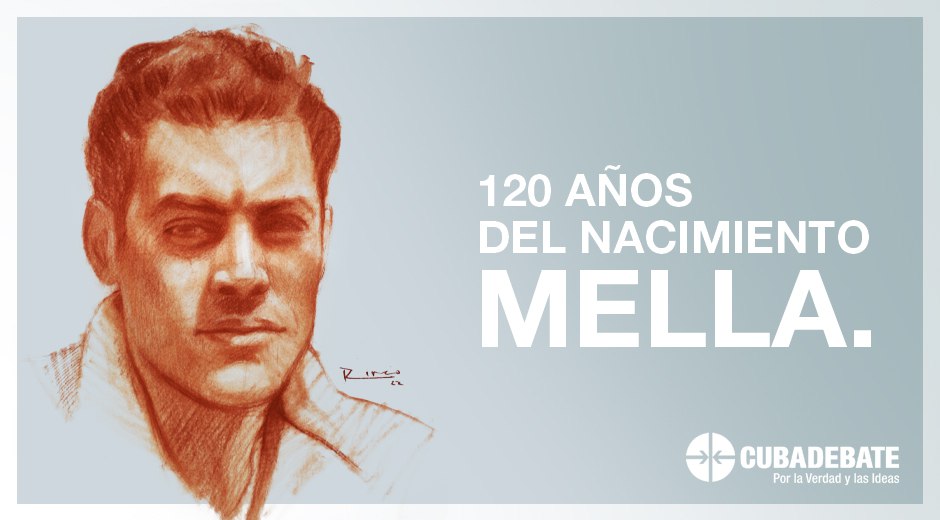The decade of the twenties of the last century supposed an acceleration of the historical time in Cuba.
After two decades marked by the structuring of the neocolonial model, its wear and tear at the hands of the corrupt actions of "generals and doctors" and the consolidation of disappointment in broad swaths of the citizenry at the failure to solve the serious problems that afflicted the nation , the country creaked from the thunderous cry of a new generation that forcefully challenged the existing.
A world scenario defined by the Mexican Revolution, the First World War, the Russian Revolution and the irruption of the Vanguards gave a sense of time to the desire for change gestated in the heat of the strong contradictions that beat within the largest of the Antilles.
This process of activating the mobilizing and critical capacity of the insular civil society had one of its articulation axes in the university premises.
The University of Havana was the epicenter of the ongoing earthquake, due to the convergence of special circumstances.
Added to the tradition of the Hill as a natural space for youthful rebellion was the historic failure of reform projects that, from the educational to the political, had tried to modernize an institution that manifested itself as a redoubt of an infertile past.
The echoes of the university reform gestated in Córdova and other centers of higher Latin American studies found in Havana fertile ground for taking root.
The clamor for transformation was felt vigorously in the great capital of the Antilles.
The reform project that was being debated at the beginning of the twenties had four central lines.
The updating of teaching methods, the fight against corrupt practices by teachers, the promotion of student co-government and university autonomy were understood as the main fronts.
From them they tried to take the University to a higher plane, not only in the field of its internal life, but also in the field of interaction with civil society and public powers.
Within the torrent of changes unleashed on the Hill, the young Julio Antonio Mella, the
undisputed protagonist of the birth of the Federation of Students of the University of Havana (FEU)
in December 1922, stood out with singular energy.
Hand in hand with an unrepeatable leader, the student body was able to adopt in a few months a radical projection that led to the search for revolutionary solutions to the situation in the country, as was expressed in the final declaration of the National Student Congress held in October 1923.
In the heat of the struggle for reform,
Mella reached a tremendously subversive conclusion in the face of the
status quo
: the problems of the University were, in their essence, an expression of the country's problems
and therefore the decisive battle had to take place in the scope of the transformation of society as a whole.
Such a perspective explains the growing closeness of the student leader with the working world, from which the creation in 1923 of the José Martí Popular University and its incorporation –in 1925– to the Communist Party result.
Mella was the bearer of a creative conception within the universe of Latin American Marxism.
In his thinking, his own interpretative path was outlined, alien to the dogmatic profile prevailing in segments of institutionalized communism
.
His revolutionary praxis was an expression of the search and iconoclasm, of a thorough understanding of the Cuban context and of the necessary articulation between the new struggles of the 20th century and the 19th-century independence tradition, especially the ideology of José Martí.
Mella's revolutionary activity was boosted by the coming to power of Gerardo Machado, bearer of a political project with authoritarian overtones with which the dominant groups tried to contain the Cuban crisis.
Oblivious to any possible cooperation with the regime, the communist leader became an obsession for the tyrant, who did not hesitate to harass and persecute him viciously.
The complexity of the situation in Cuba forced Mella to go into exile.
Since his emigration, he has deployed his activity on two major fronts.
He was inserted into the actions of the international communist movement, while he advanced in the preparatory work of the revolution project that he intended to bring to the Island.
This was a stage of confrontation with the bloc of the right, of permanent concern for his homeland and also of polemics with leftist forces that abjured the radical transformation of society or that understood it from a handful of inflexible creeds of little practical utility.
In the heat of these years –in which he also loved and was loved intensely, in which he never ceased to be for an instant the young whirlwind that at one time made the entire Hill sigh– death surprised him in the form of treacherous bullet commissioned by the satrap who hated him so much.
But the closure of his passage through the kingdom of this world was nothing but a fiction, since
Mella was so alive that his imprint ran through the entire revolutionary cycle that, just one year after his assassination, began on the Island
as a result of the exacerbation of the social contradictions that he had identified with crystal clarity.
In the imaginary built on the heat of the idea of revolution in Cuba, Mella occupies a top place as the highest voice of a generation that knew how to reinterpret, from its coordinates, the radical nationalism of the mambisado.
The creative work of him and his contemporaries also became a fundamental reference for the new batches that, in pursuit of national sovereignty and social justice, delivered the purest of efforts in the following decades.
Julio Antonio Mella's defiant gaze still challenges us
.
